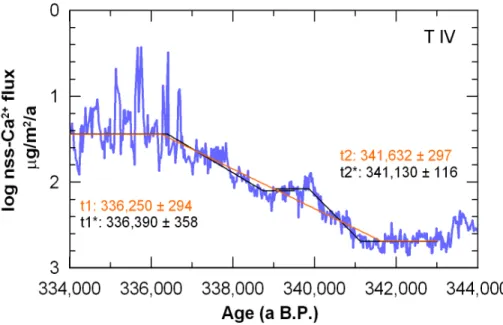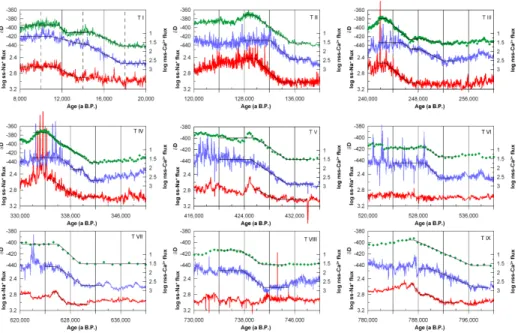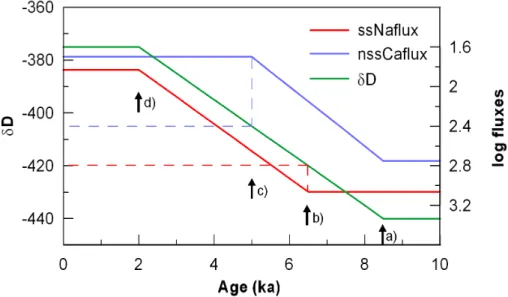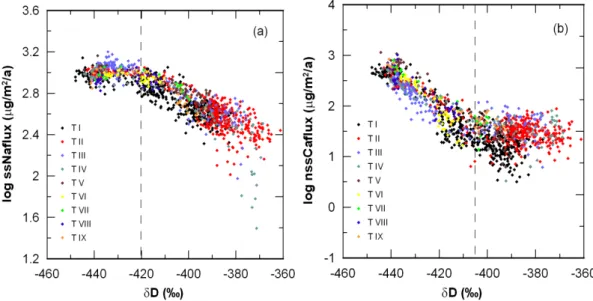The southern hemisphere at glacial terminations: insights from the Dome C ice core
Texto
Imagem
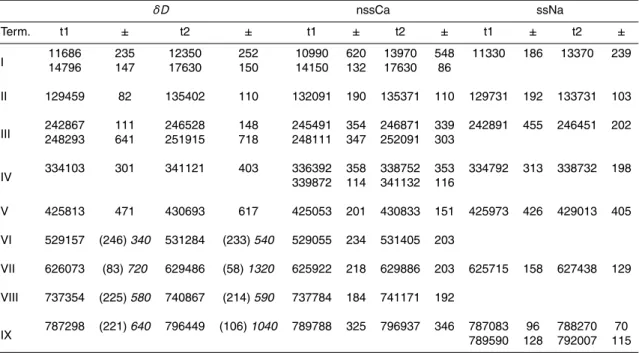



Documentos relacionados
For period I and III, the consideration of sodium from sea salt aerosol is most important, while accounting for the additional major cations calcium and magnesium from mineral
Proxy records for the western South Atlantic and south- eastern South America spanning Termination 1 based on marine sediment core GeoB6211-2 together with ice core
To investigate the influence of snow depth, sea ice density, and area on sea ice thick- ness and volume estimates we use freeboard retrievals from ICESat, together with dif-
In the fine frac- tion a tra ffi c-related (Fe, Cu, Zr, Sb, Ba) factor was found as well as resuspended dust, sea/road salt, aged sea salt, reacted Cl (Cl), S-rich and solid fuel
Furthermore, the high- est ionic concentrations were also found in this layer, and it appears reasonable to suggest that unfractionated sea salt was present 17 cm from the
The top 2 cm section of the sea ice had relative high bulk salinity on 20 January (Fig. 3) likely due to the granular nature of the sea ice in this part of the core creating
The reconstructions are based on a multilinear regression of forecasted ice concentration, level ice thickness, ridge density, ice speed and an additional factor which is based,
The mean values and uncertainties of snow depth and ice and snow densities, determined for FY ice and MY ice, were used to calculate the total error in ice thickness retrieval

